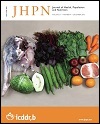A Qualitative Exploration of Social Contact Patterns Relevant to Airborne Infectious Diseases in Northwest Bangladesh
DOI:
https://doi.org/10.3329/jhpn.v31i4.19976Keywords:
Airborne infectious diseases, Leprosy, Social contact patterns, Tuberculosis, BangladeshAbstract
In South Asia, the burden of infectious diseases is high. Socioeconomically and culturally-defined social interaction patterns are considered to be an important determinant in the spread of diseases that are transmitted through person-to-person contact. Understanding of the contact patterns in this region can be helpful to develop more effective control measures. Focus group discussions were used in exploring social contact patterns in northwest Bangladesh. The patterns were assessed for perceived relevance to the spread of airborne infectious diseases, with special focus on diseases, like leprosy and tuberculosis, in which the role of social determinants is well-recognized. Highly-relevant social contact patterns inside the home and the neighbourhood, across age and sex groups, were reported in all group discussions. Outside the home, women and girls reported relevant contacts limited to the close neighbourhood while men mentioned high relevant contacts beyond. This implies that, in theory, infectious diseases can easily be transmitted across age and sex groups in and around the home. Adult men might play a role in the transmission of airborne infectious diseases from outside this confined area since only this group reported highly-relevant social contacts beyond the home. This concept needs further exploration but control programmes in the South Asian region could benefit from considering differences in social contact patterns by gender for risk assessments and planning of preventive interventions.
DOI: http://dx.doi.org/10.3329/jhpn.v31i4.19976
J HEALTH POPUL NUTR 2013 Dec; 31(4): 424-434
Downloads
498
367

